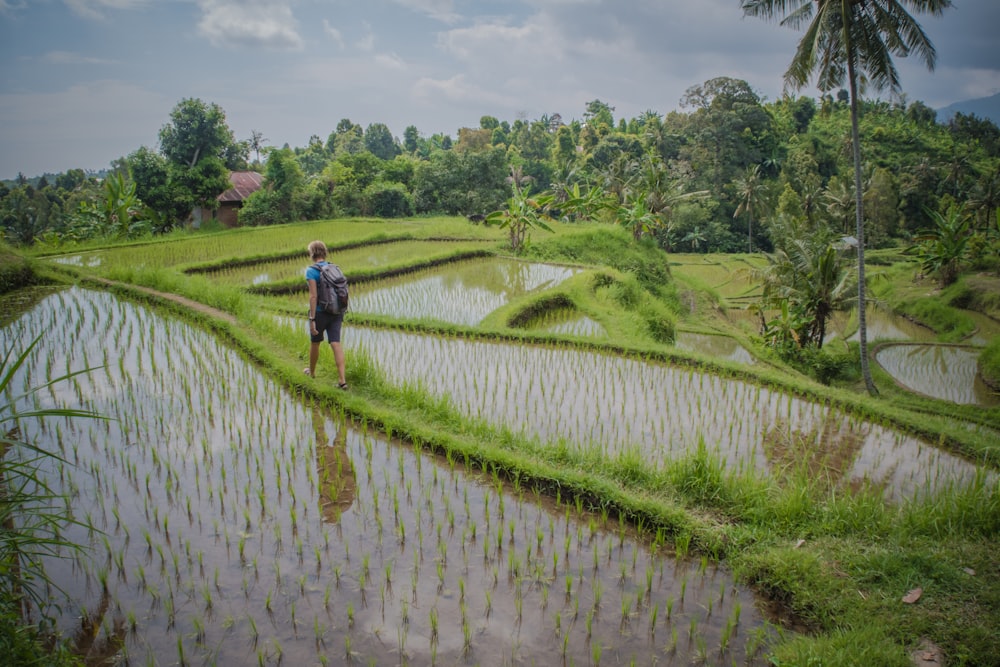Don’t Freak Out, but There’s Probably Arsenic in Your Rice
Don’t Freak Out,
but There’s Probably Arsenic in Your Rice
Okay,
so first of all, what is arsenic?
Arsenic
is a naturally occurring element that exists in both organic and inorganic
forms. Inorganic arsenic compounds are typically found in soils, sediments, and
groundwater. These compounds can either occur naturally or as a result from
industrial use. On the other hand, organic forms are found primarily in fish
and shellfish in small amounts. According to the World Health Organization,
arsenic is highly toxic in its inorganic form and is linked to cancer,
decreased cognitive development, and even death.
Roughly
85% of the rice we consume in the United States is grown by American farmers.
Each year, 18 billion pounds of rice are grown in Arkansas, California,
Louisiana, Mississippi, Missouri, and Texas.
In
America today, rice farming involves specialized technology, like lasers and
computers, to help position water control levels for optimal results.


In
addition, fertilizers are dispersed by airplanes and specific machinery enables
uniform flooding and controlled draining in the rice fields. Many farmers flood
their rice fields to maintain better growth, produce higher yields, and
suppress the weeds.
Because
inorganic arsenic is mainly detected in soils and groundwater, it is easily
absorbed into the rice.
This
is a major concern for those following a gluten-free diet, simply because rice
is a staple in many gluten-free alternatives. Previous research has been
conducted to assess the amount of arsenic in rice and rice-based products
(including baby food) and found some products to be relatively high. Throughout
my investigation, I’ve found that brown rice has about 80% more inorganic
arsenic than white rice. This is because arsenic is concentrated in the bran
(outer layer) and germ (inner layer) of the grain. In white rice, the bran is
polished off and the germ is removed. Although this process removes much of the
fiber, vitamins, and minerals… it also removes some of the arsenic.
Currently,
there is no federal limit for arsenic in rice and rice products.
Should
we be worried?
Well…possibly.
But it’s important to understand that not all arsenic that is consumed will be
absorbed. Newer research has suggested that specific processing steps may be
able to reduce the arsenic content in rice, but more studies must be conducted
to prove this theory.
What
can we do?
Lower
your possible consumption of arsenic by finding out how much is in your tap
water. You can do this by contacting your local water treatment facility or the
manufacturing company for the bottled water products that you purchase.
Eat
a variety of grains, and if you’re strictly gluten-free, then try experimenting
with millet, buckwheat, or quinoa.
Soak
and rinse your rice before cooking! Rinsing the rice before it has been cooked
may remove up to 50% of the arsenic.

This is a wonderful post, for both the public and for dietetic professionals! I’ve constantly been asked what the reason is for washing rice, and I never thought about this issue’s connection to patients on the gluten-free diet. Considering the WHO’s research that shows the toxins association with medical conditions, I wonder if the FAO has mitigation plans to address global rice productions use of arsenic-containing fertilizers? Especially considering rice is a staple food so many non-developed countries and the UN has multiple sustainable development goals focused on issues of hunger and sustainable agriculture. Great post, I hope to hear more research about the subject published soon!
ReplyDelete